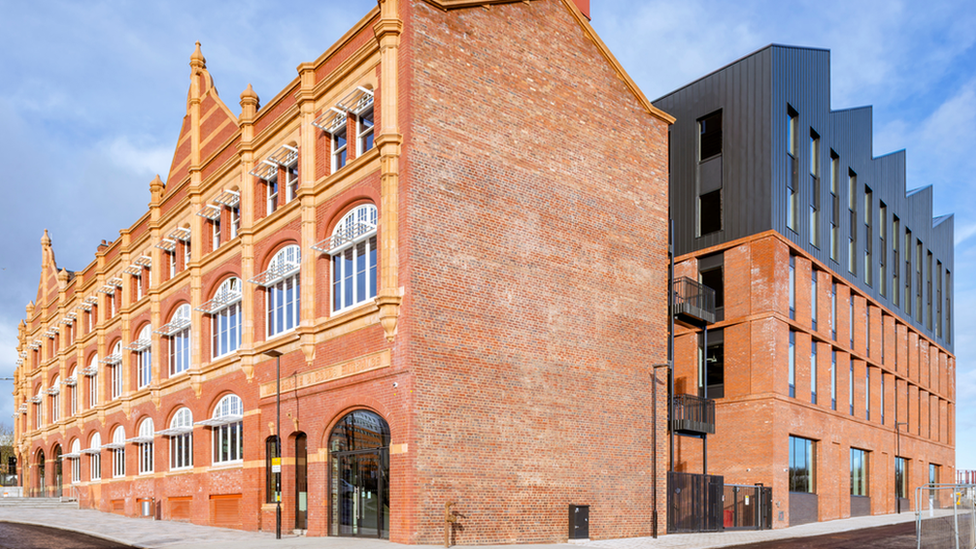Public artworks in Stevenage and Birmingham given Grade II listed status
- Published
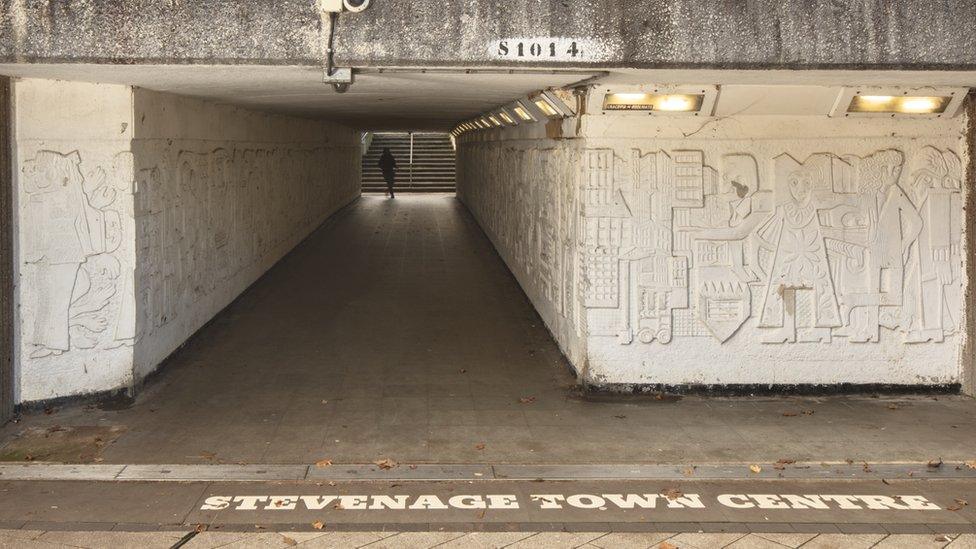
Park Place underpass in Stevenage is one of the newly listed artworks
Three public artworks have been listed at Grade II by the Department for Digital, Culture, Media and Sport.
Gyula Bajó's mural at Co-operative House in Stevenage, Hertfordshire, has been given the status.
It is joined by two other works by sculptor William Mitchell at the Hockley Flyover in Birmingham and Stevenage's Park Place underpass.
Heritage Minister, Nigel Huddleston, described them as "three iconic public artworks".

Gyula Bajó's Co-op mural
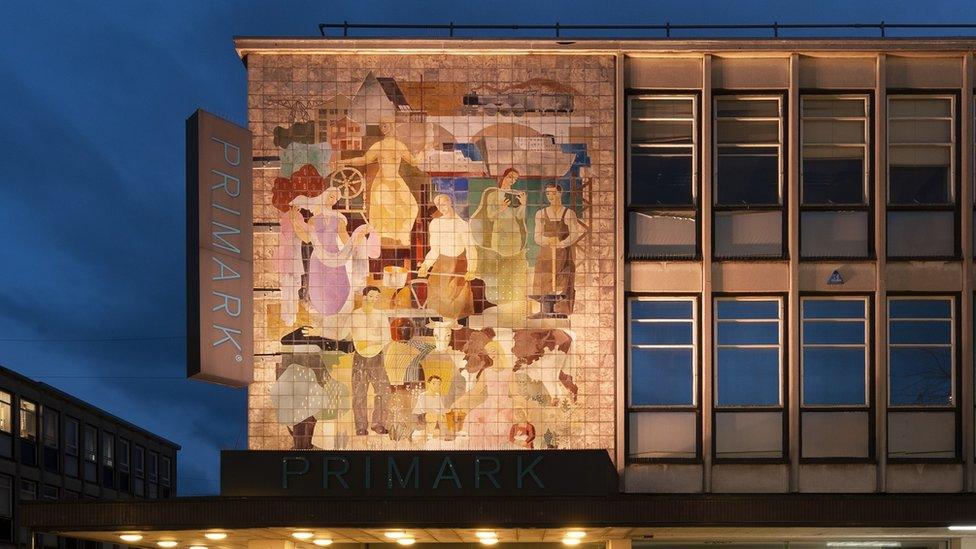
The Co-op store was the the first major retail premises to open in Stevenage town centre
Co-operative House in Stevenage is now a Primark but was previously the "Stevenage Super Store" of the Letchworth, Hitchin and District Co-operative Society, Historic England said.
The mural by Hungarian-born artist Gyula Bajó (1907-84), is the earliest of the four major surviving Co-op murals of the 1950s and 1960s.
The only other listed mural is one in Hull by Alan Boyson.
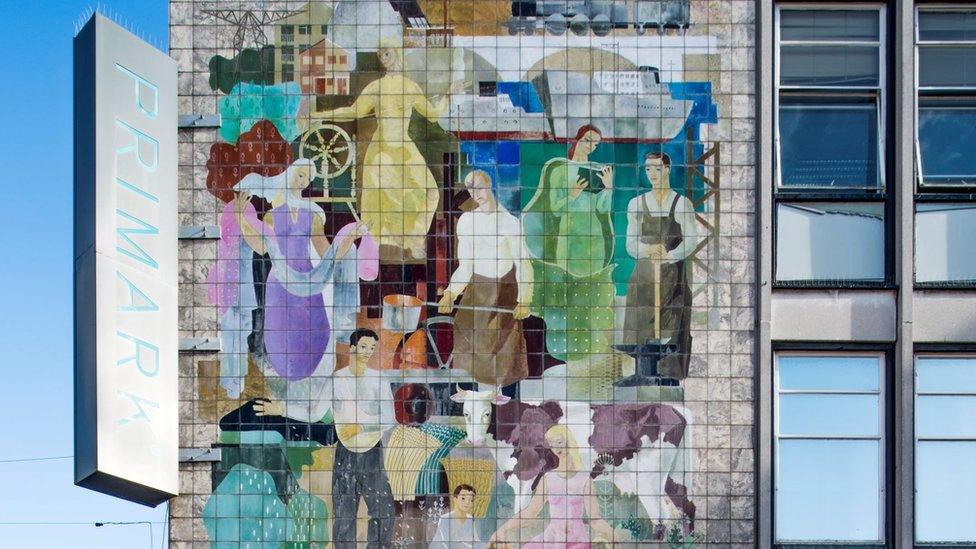
The mural features a spinning-wheel, a steelworker, a teacher and agricultural life
A Co-operative Wholesale Society pamphlet on Co-operative architecture, published in 1960, explains that the Stevenage mural "symbolises the spirit and activities of the Co-operative Movement as a whole and in relation to Stevenage".
The mural depicts the "four cornerstones of a balanced economy - Industry, Commerce, Transport and Agriculture".
Eilíse McGuane, from Historic England said the mural was "an integral part of Stevenage town centre, seen and enjoyed by local people and visitors every day".

Park Place underpass
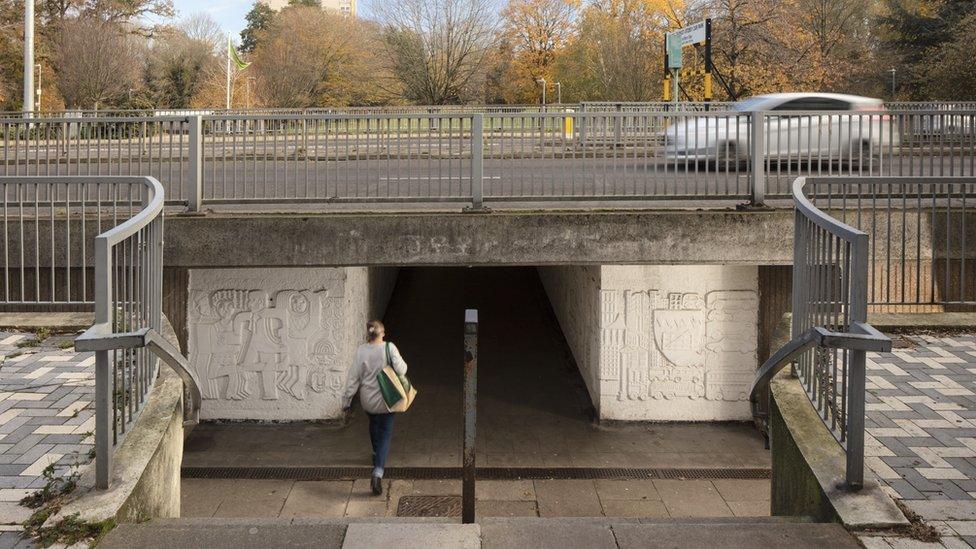
The mural at Park Place underpass in Stevenage depicts contemporary vehicles and the developing town
The underpass was built as part of the dual carriageway redevelopment of St George's Way in Stevenage in 1972 and was decorated by murals by architectural sculptor William Mitchell (1925-2020).
The decorative panels depict social, political and cultural events of the day alongside scenes of everyday life in Stevenage.
It also includes a United States Air Force space rocket and cosmonauts in a Soviet landing capsule.
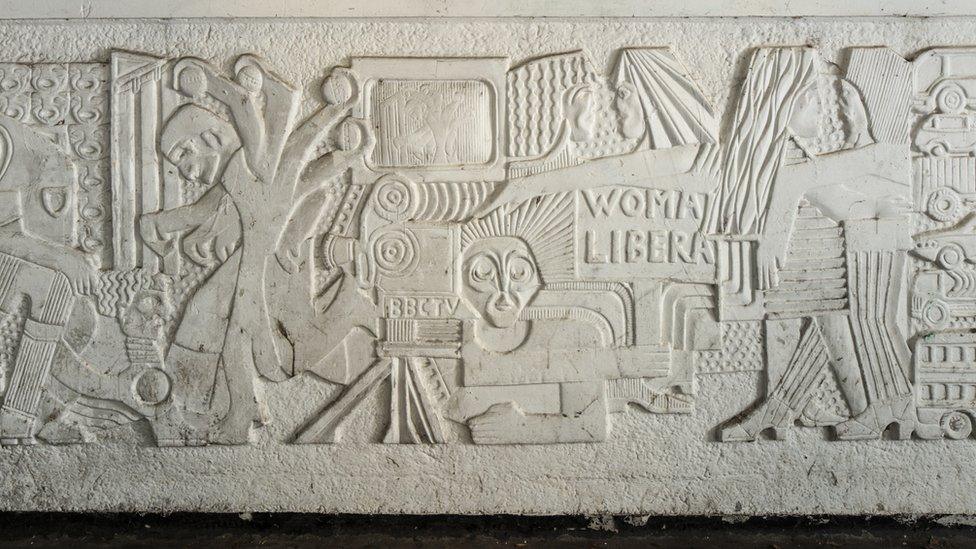
The underpass also features political demonstrators, including the Women's Liberation Movement
Mitchell wrote in 2015, the sculpture played an important role in giving an area character and making the surroundings "less severe".
Phil Bibby, from Hertfordshire County Council, said it was "fantastic" the murals had been recognised by Historic England.
"I hope that in the future, some of the newer subway murals we've been creating around the town to make walking and cycling more attractive options might also gain similar recognition," he added.

Hockley Flyover
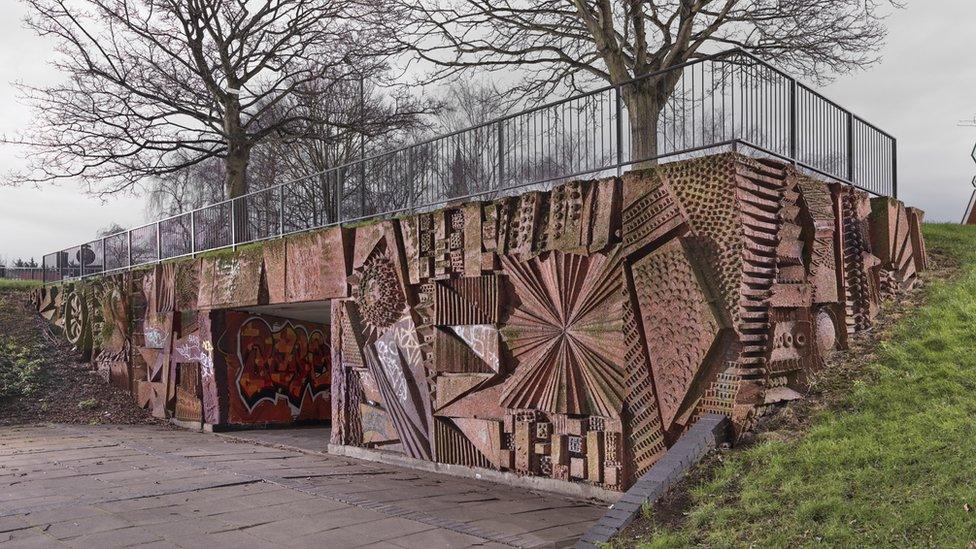
The murals are at the underpass entrances at the Birmingham Hockley Flyover
The Birmingham Hockley Flyover was opened in 1968 and featured three walls with murals designed by William Mitchell
Each mural has a slightly different character, incorporating geometric shapes, and abstract patterns.
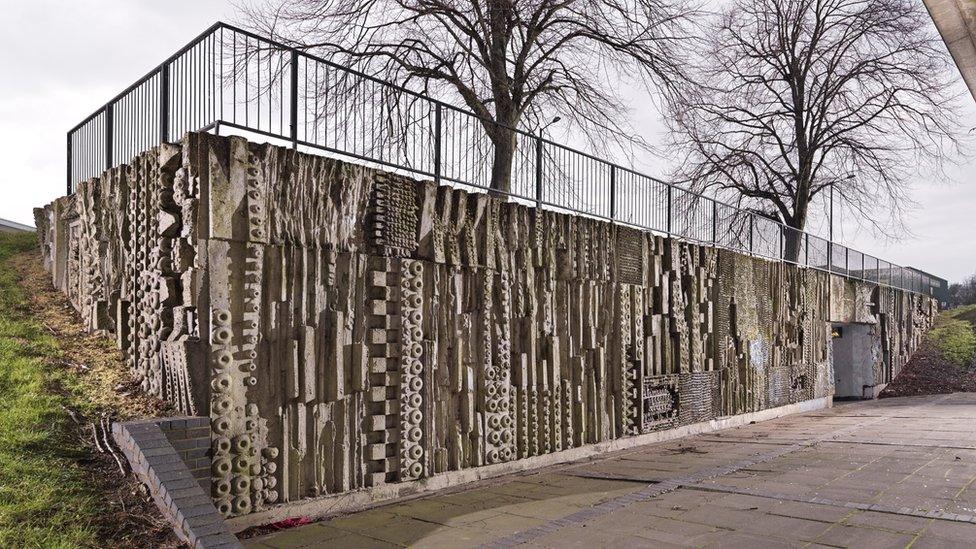
William Mitchell expressed pride that people felt encouraged to climb on the murals
Mitchell said: "Hockley flyover was one of the greatest things that ever happened in this country because it was the first of its kind and certainly of its scale."
The murals were designed in a playful way and intended to encourage people to climb upon them.
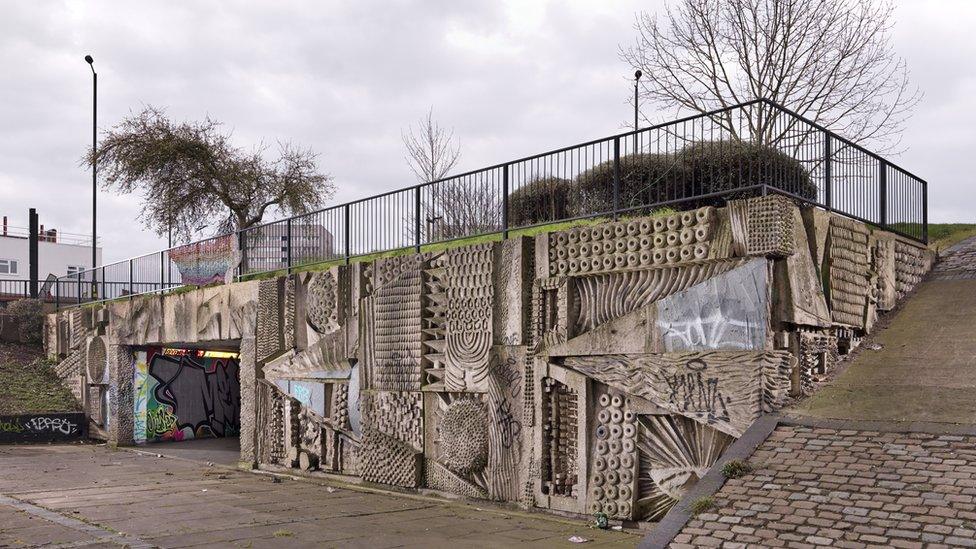
Each mural is cast in pigmented concrete
Louise Brennan, from Historic England said: "The murals at Hockley Circus are among the best examples of William Mitchell's work and showcase his playful and lively style to great effect.
"They have fulfilled their aim to elevate an otherwise utilitarian structure and encourage interaction with the urban environment."

Find BBC News: East of England on Facebook, external, Instagram, external and Twitter, external. If you have a story suggestion email eastofenglandnews@bbc.co.uk, external
Related topics
- Published25 May 2022
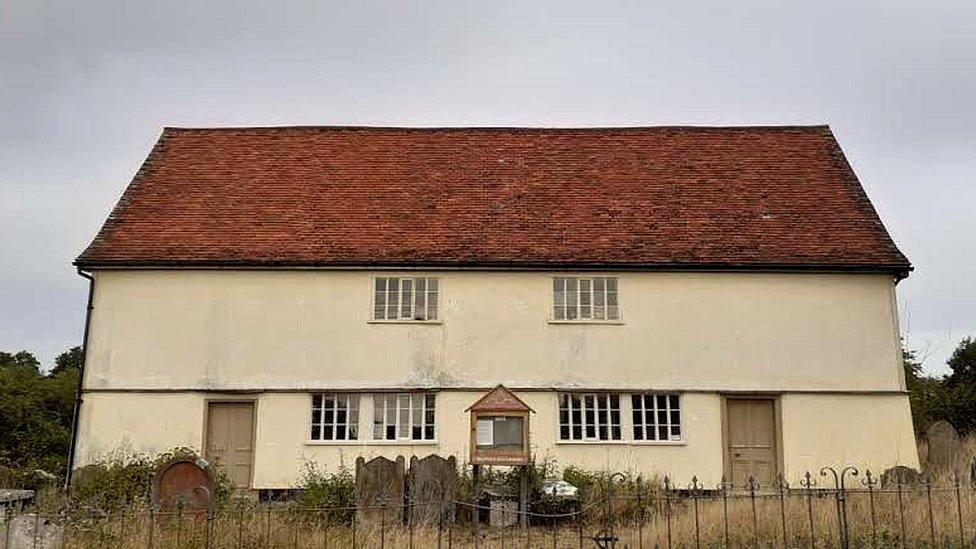
- Published8 April 2022
